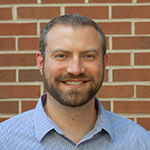The University of Utah Robotics Center is a leading hub for cutting-edge research in medical and surgical robotics, pioneering advancements that revolutionize healthcare delivery and surgical practices. Researchers at the center focus on developing innovative robotic systems and technologies tailored for medical applications, with a strong emphasis on improving patient outcomes and healthcare efficiency. One key area of research is the development of robot-assisted surgical systems that enhance the precision, dexterity, and safety of surgical procedures. This includes the design of robotic platforms capable of performing minimally invasive surgeries with unparalleled accuracy, leading to reduced recovery times and improved patient comfort. Interdisciplinary collaboration is a cornerstone of the Robotics Center's research approach, with experts from engineering, computer science, medicine, and allied healthcare fields working together to tackle complex challenges in medical robotics. This collaborative effort ensures that research outcomes are not only technologically advanced but also clinically relevant and ready for translation into practical healthcare solutions.
Aligned, Robust, and Interactive
Autonomy (ARIA) Lab
Daniel Brown, PhD
Assistant Professor
Kahlert School of Computing
Artificial intelligence and
Robotics in Medicine Lab (ARMLab)




